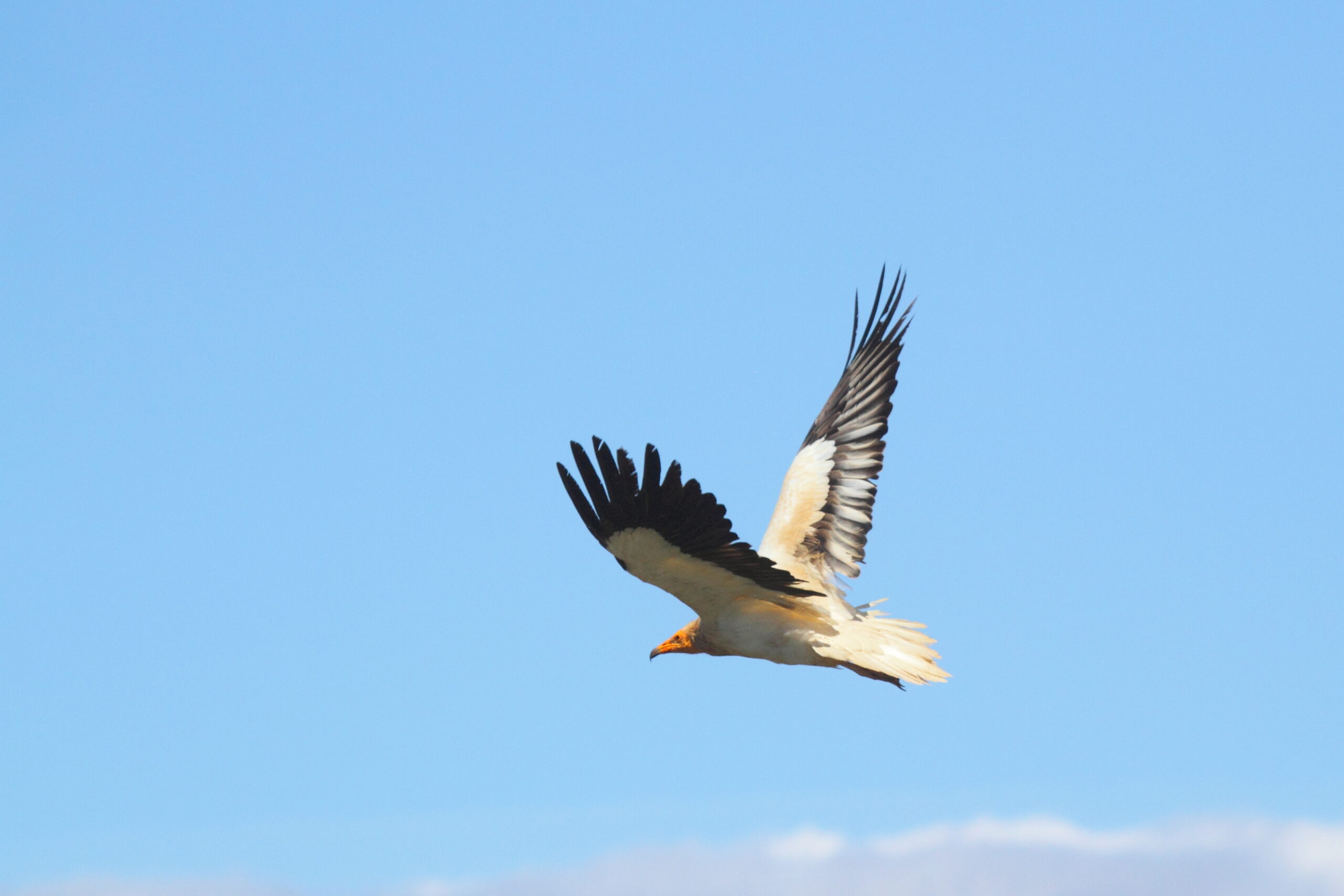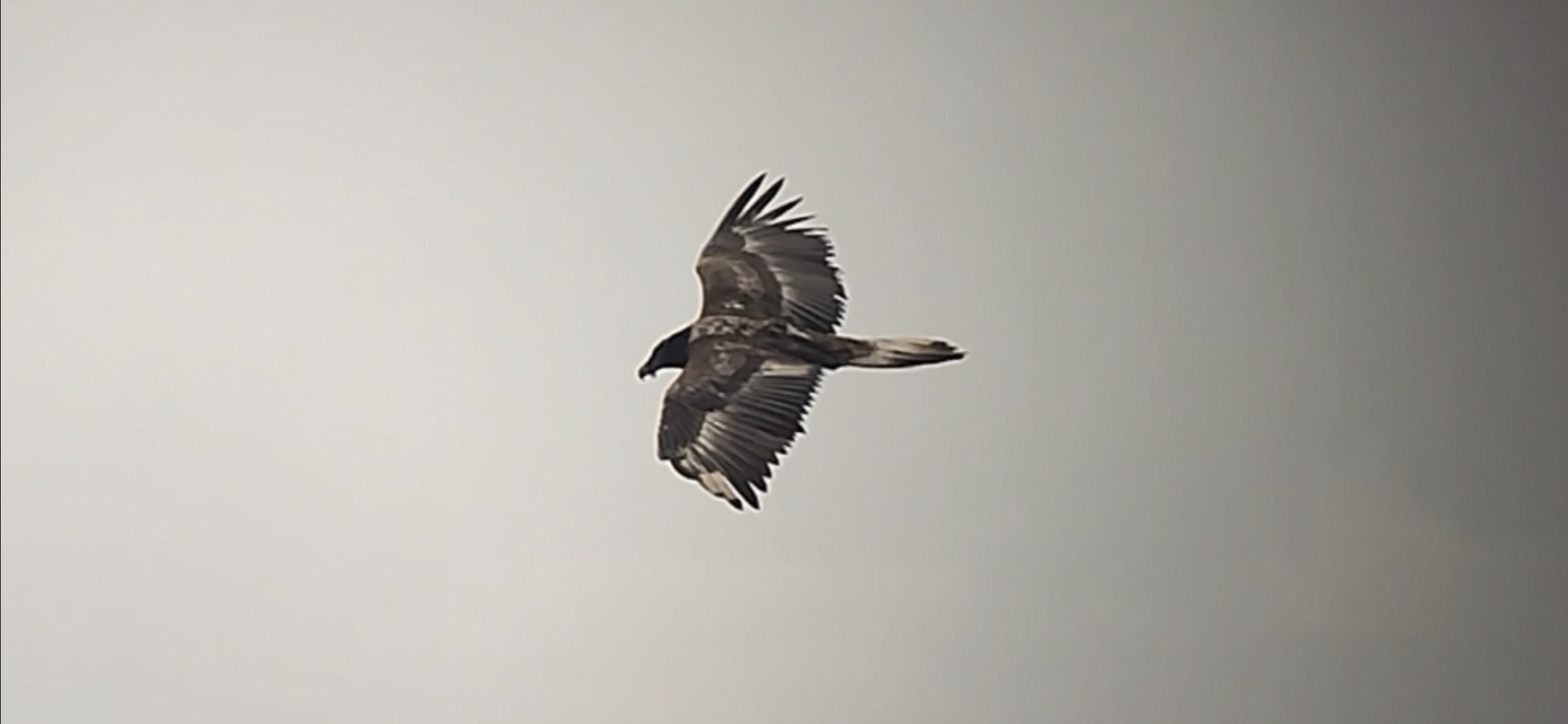For the first time in Europe, a captive-bred Egyptian Vulture released in Italy has certainly formed a pair in the wild. We are talking about the legendary Sara, who recently returned to Italy from Africa with a partner!
Sara bred in captivity for conservation purposes


In 2015, the Egyptian Vulture Sara hatched at CERM Centro Rapaci Minacciati Association in Italy. A few months later, CERM released the young vulture into the wild in collaboration with LIPU and with the support of the Ministry of Environment.
In 2015, the Egyptian Vulture Sara hatched at CERM Centro Rapaci Minacciati Association in Italy. A few months later, CERM released the young vulture into the wild in collaboration with LIPU and with the support of the Ministry of Environment. This action was part of a tested release programme led by the CERM that started in 2003 and, from 2015, in collaboration with us at the Vulture Conservation Foundation (VCF) and the Egyptian Vulture Captive Breeding Network. Ahead of Sara’s release in Puglia in August 2015, she was fitted with a GPS transmitter provided by us at the VCF. Since 2017, the LIFE Egyptian Vulture Project strengthened these efforts by implementing conservation actions in favour of the Egyptian Vulture in the region and beyond.
Following Sara’s travels for a record-breaking period

Thanks to the GPS transmitter equipped on Sara’s back, we have been able to follow her movements for the first seven years of her life.
Less than ten days after her release into the wild, Sara had moved away from the site and reached Niger after travelling 3,980 km for 28 days. After staying for four years in sub-Saharan Africa, spending the summers in the Atlas Mountains (northern Algeria), Sara has returned every year to southern Italy to spend the spring and summer and then return to winter in Niger.

Egyptian Vulture Sara finds a partner in the wild
This year, we have been eagerly awaiting Sara’s arrival, hoping she would breed in the wild. Her behaviour looked promising since she started her migration northwards two months earlier than in previous years.
In fact, Sara left Niger on 26 February 2022 and, after a journey of around 2,800 km, arrived in Sicily on 22 March. The next day she stopped in the centre of the island, in an area usually frequented by the species. As Sara seemed to want to stay close to a rocky cliff, CERM member Mimmo Bevacqua and his friend Andrea Cairone, who had been alerted and directed through the GPS data, investigated the situation.
Keeping a safe distance, Andrea clearly observed and recognized Sara, who sported a plumage that was almost completely coloured orange. That’s not all – Sara was in the company of a male! The two Egyptian Vultures exhibited unmistakable breeding behaviour near a rocky cliff, which suggests that the formation of the new pair had already taken place in Africa. On 2 April, Sara left and headed for the areas of Basilicata that she had frequented regularly in recent years. Most likely, the ‘original owners’ of the Sicilian nesting area, who appeared after a few days, chased away the new ‘intruding’ pair. The story continued in Basilicata, with Sara and her mate seen mating again in an area frequented by the species.

This development marks a milestone. For the first time in 19 years, sufficient evidence indicates a captive-bred Egyptian Vulture from CERM formed a breeding pair in the wild. This development shows that captive-breeding and release programmes can be effective in the long term to support the conservation of Egyptian Vultures.
We rejoice in this news and cheer for Sara to successfully nest this year and in the years to come!



